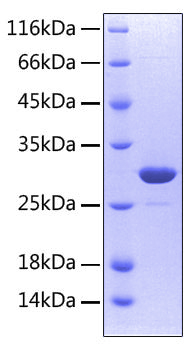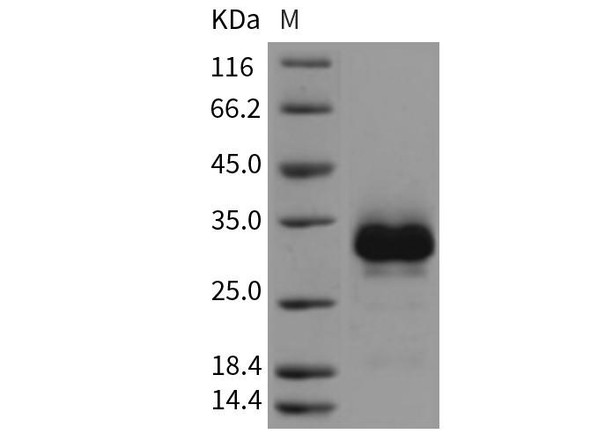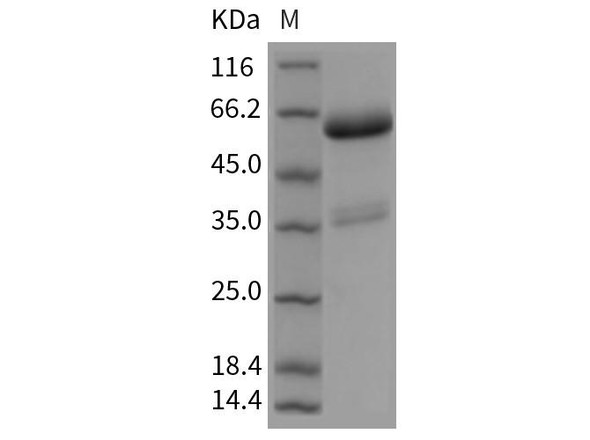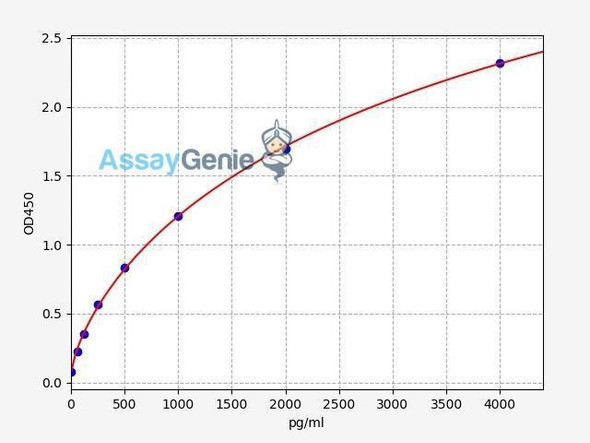Description
Recombinant Human TNFRSF11A/RANK/CD265 Protein
The Recombinant Human TNFRSF11A/RANK/CD265 Protein is a biologically active recombinant protein that plays a significant role in various cellular processes and signaling pathways in human biology. This protein is widely employed in immunological research, cell biology studies, protein-protein interaction analyses, and therapeutic development, providing researchers with a reliable tool for investigating TNFRSF11A/RANK/CD265 function and its implications in health and disease.
This product (SKU: RPCB0547) is produced using HEK293 cells and features a C-His tag for convenient detection and purification. The protein exhibits a calculated molecular weight of 26.3 kDa with an observed molecular weight of 35-50 kDa under denaturing conditions, achieving ≥ 95 % as determined by SDS-PAGE., ensuring exceptional quality and consistency for research applications.
Key Features
| High Purity by Affinity Chromatography | |
| Mammalian & Bacterial Expression Systems | |
| High lot-to-lot consistency via strict QC |
| Product Name: | Recombinant Human TNFRSF11A/RANK/CD265 Protein |
| SKU: | RPCB0547 |
| Size: | 10 μg |
| Reactivity: | Human |
| Synonyms: | TNFRSF11A, CD265, FEO, LOH18CR1, ODFR, OFE, OPTB7, OSTS, PDB2, RANK, TRANCER |
| Tag: | C-His |
| Expression Host: | HEK293 cells |
| Calculated MW: | 26.3 kDa |
| Observed MW: | 35-50 kDa |
| Gene ID: | 8792 |
| Protein Description: | High quality, high purity and low endotoxin recombinant Recombinant Human TNFRSF11A/RANK/CD265 Protein (RPCB0547), tested reactivity in HEK293 cells and has been validated in SDS-PAGE.100% guaranteed. |
| Endotoxin: | < 1 EU/μg of the protein by LAL method. |
| Purity: | ≥ 95 % as determined by SDS-PAGE. |
| Formulation: | Lyophilized from a 0.2 μm filtered solution of PBS, pH 7.4.Contact us for customized product form or formulation. |
| Reconstitution: | Centrifuge the tube before opening. Reconstitute to a concentration of 0.1-0.5 mg/mL in sterile distilled water. Avoid vortex or vigorously pipetting the protein. For long term storage, it is recommended to add a carrier protein or stablizer (e.g. 0.1% BSA, 5% HSA, 10% FBS or 5% Trehalose), and aliquot the reconstituted protein solution to minimize free-thaw cycles. |
| Storage: | Store at -20℃.Store the lyophilized protein at -20℃ to -80 ℃ up to 1 year from the date of receipt. After reconstitution, the protein solution is stable at -20℃ for 3 months, at 2-8℃ for up to 1 week. |
This protein is a member of the TNF-receptor superfamily. This receptors can interact with various TRAF family proteins, through which this receptor induces the activation of NF-kappa B and MAPK8/JNK. This receptor and its ligand are important regulators of the interaction between T cells and dendritic cells. This receptor is also an essential mediator for osteoclast and lymph node development. Mutations at this locus have been associated with familial expansile osteolysis, autosomal recessive osteopetrosis, and Paget disease of bone. Alternatively spliced transcript variants have been described for this locus.







